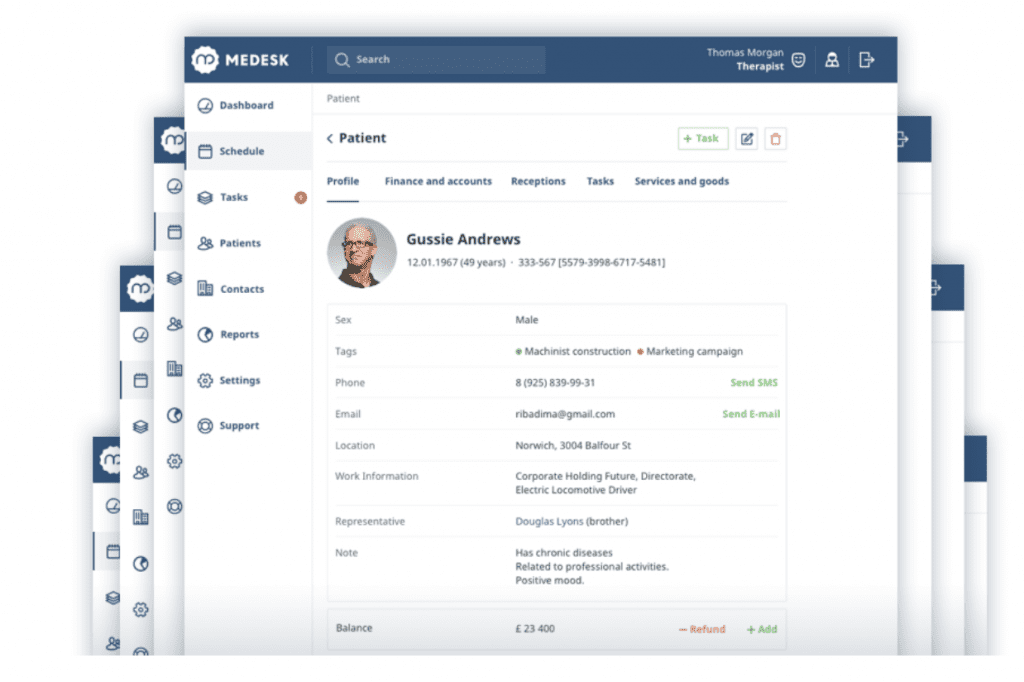Your electronic health records are meant to boost your clinical effectiveness by providing as much relevant information as possible about your patients. However, an EHR is only ever going to be as good as the way it is organized. As with many things in life, it has everything to do with proper planning and preparation. If you want to give your patients the best quality of care, then you absolutely need a health record that works for you. Let’s take a look at what it takes to make the right choice.
EHR Selection: How Do You Start?
There are lots of factors that can unnecessarily complicate your decision to implement a new EHR software in your clinic. Fortunately, there are also plenty of ways you can simplify the whole process. No matter how long it takes you to choose, it’s vital that you take a systematic approach and select the best EHR software for your clinic’s needs.
As part of your EHR selection and implementation process, you should consider the following steps:
1. Attend a demo of the EHR software and evaluate it against others
When choosing software, you should have the opportunity to discuss the features and capabilities with the developers. Many such providers offer on-screen demos that explore your requirements and then show you how your workflow could be replicated. Make sure that you take this chance to ask as many questions as possible, and if necessary, avail yourself of a trial account to try the EHR software out for yourself.
2. Select the most appropriate EHR for your clinic’s needs
While there are plenty of parts of your workflow that are similar to those found in other clinics, you are bound to do certain things differently. After all, that’s how you set yourself apart from other clinics in the view of patients and your peers alike. Make sure that you check that your chosen EHR and practice management system combination can adapt to your unique requirements without too much trouble. The less hassle you have at the beginning of the whole process, the less you are likely to have problems as you go on to the next steps below.

3. Agree on an implementation plan with your colleagues and your software provider
You should be very careful when looking at how your software vendor provides their support. The gold standard is a live chat system that offers a response within 5 minutes during business hours from a real human being. It should lead easily to a proper phone call, on-screen support and secure remote control of your computer if necessary.
There should be a standardized approach in place so you can make the transition from your current workflow to your new software as easy as possible. You ought to feel like the whole training process is like second nature to the software provider. Ideally, you will be given support from someone who has real-life experience of both the healthcare and the IT worlds.
4. Discuss a data migration plan
There is a lot of confusion possible when it comes to data migration if your existing and potential new suppliers are not forthcoming about their ability to export and migrate data in the way that you would have expected. Make sure that you choose a practice management platform and EHR supplier that can explain to you exactly what kind of information can be transferred to your new system automatically and what might need to be uploaded manually.
5. Create a plan to examine your workflow efficiency and adapt it to your software
When you switch over to EHR software from paper-based work or even another computer program, it’s the perfect opportunity to make some changes to your workflow. There’s no guarantee that your current way of doing things is the best and most efficient means of completing all your tasks. Take the chance to discuss your workflow with your new software provider and see what you can improve.
6. Understand how you can benefit from add-ons
The better EHR systems are no longer limited to just collecting patient information as you write your notes. There are all sorts of additional features that you can benefit from, including:
– Online booking
– Calendar management and sync
– Telemedicine
– Prepayments and deposits
– Automated booking confirmations and reminders for patients
– Reporting for clinical, marketing and business KPIs
– Accounting software integration
7. Undergo training for all staff and roles
Getting the most out of an EHR system depends on how you prepare each of your colleagues for its use in a live situation. Ultimately, it’s role-dependent. How receptionists take advantage of using an EHR is going to be inherently different from how clinicians would benefit. Make sure you get dedicated training sessions for each job role in your clinic, whether that’s admin, clinical, managerial or anything else.
8. Go live!
The proof is in the pudding. Having done all the preparatory work described here in this article, your clinic should be raring to go by the time you are due to go live. Try using your new software in a real situation and you’ll quickly note how your workflow progresses much more smoothly than it used to. In any case, if you hit any snags, you already know you’ll have a world-class support team to keep you on track.
By Michael May,
MA (Oxon) BMBCh
Business Development Manager for Medesk – Practice Management Software for Better Quality of Care






